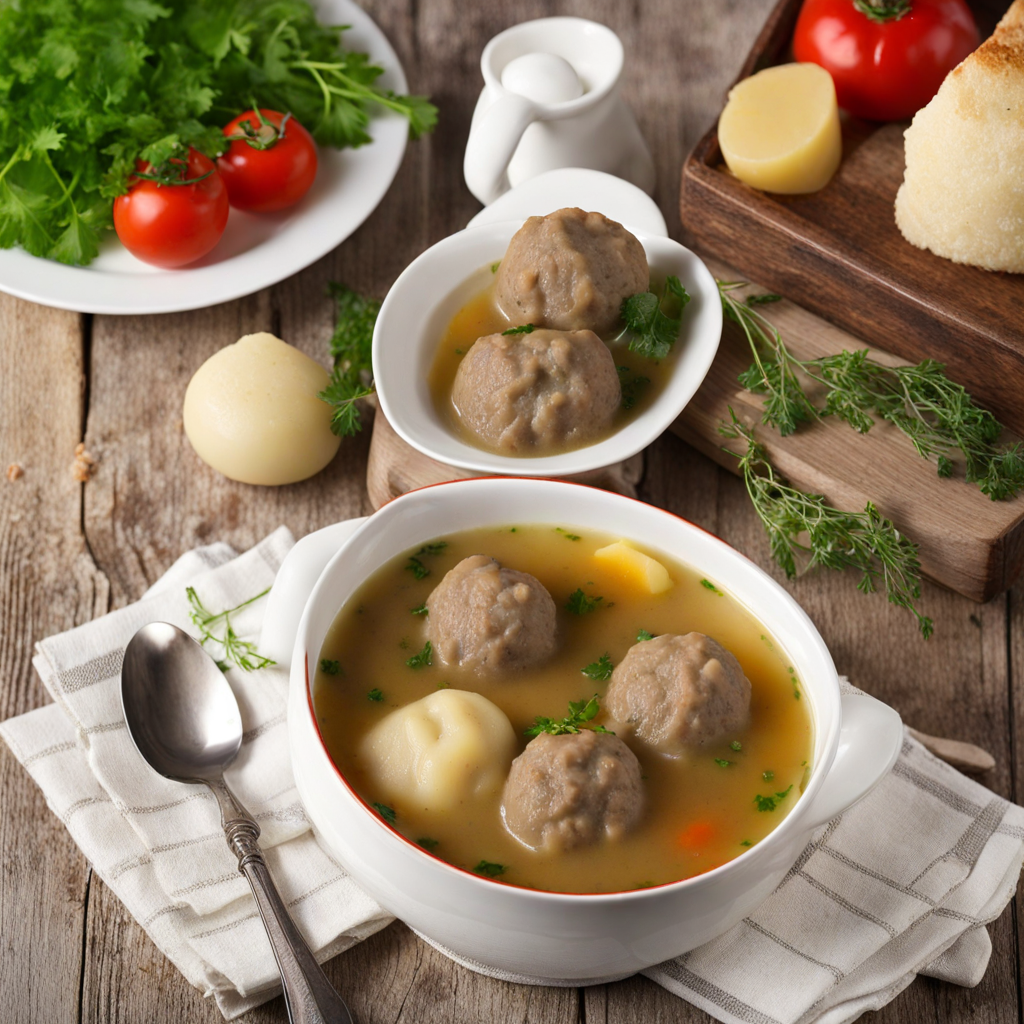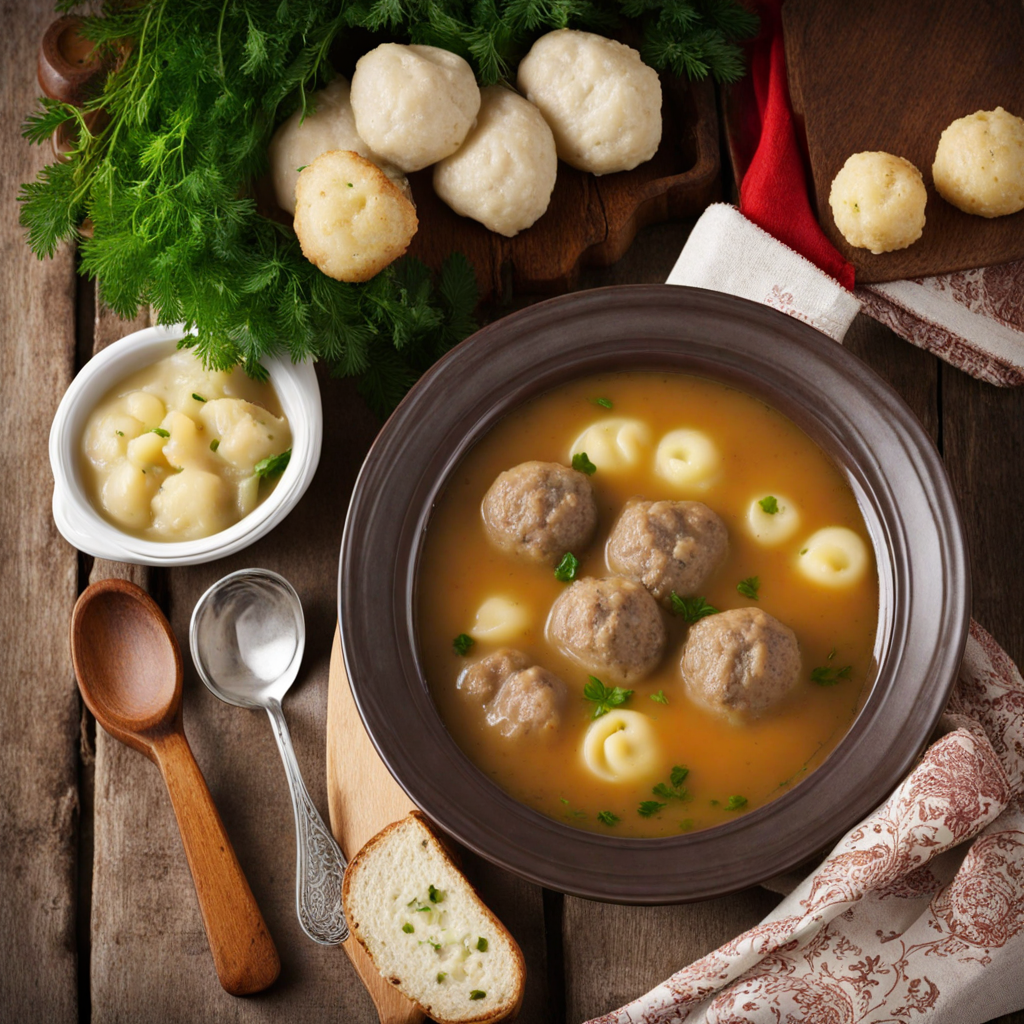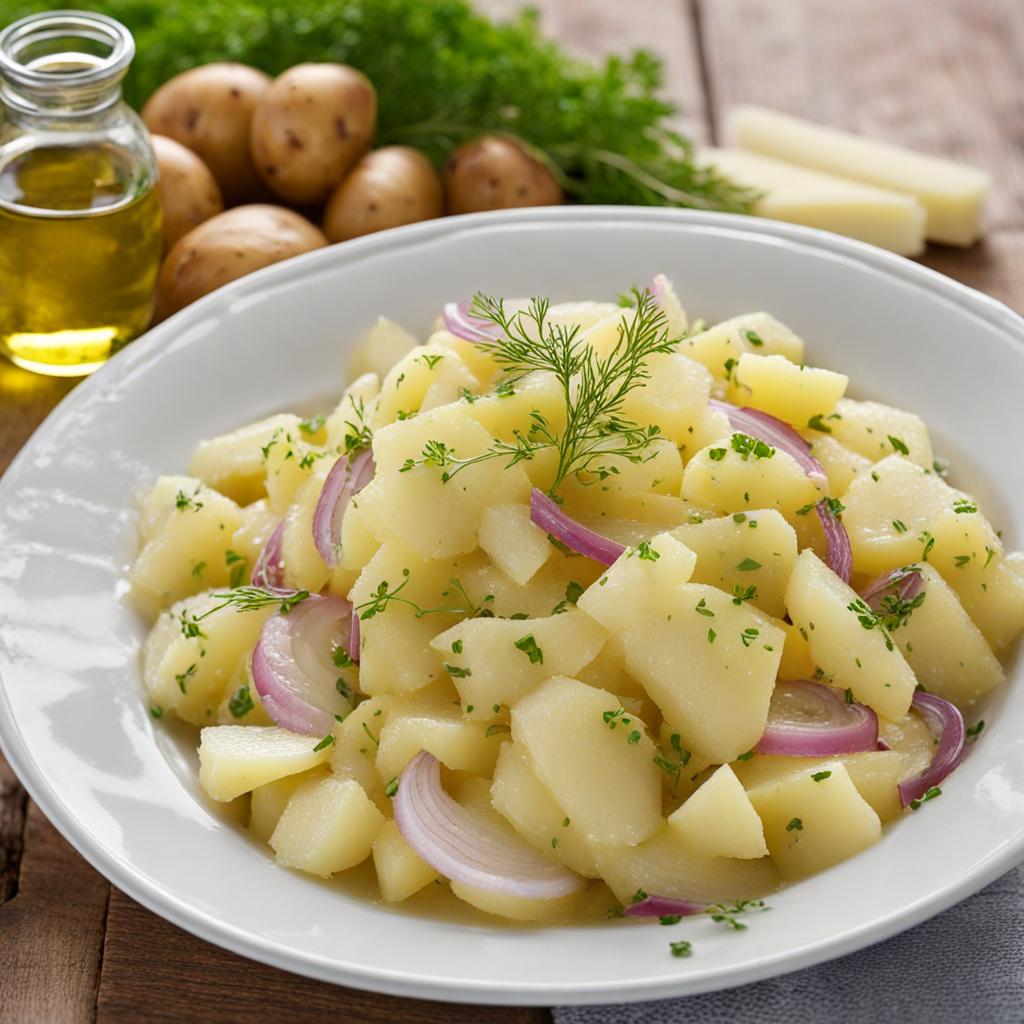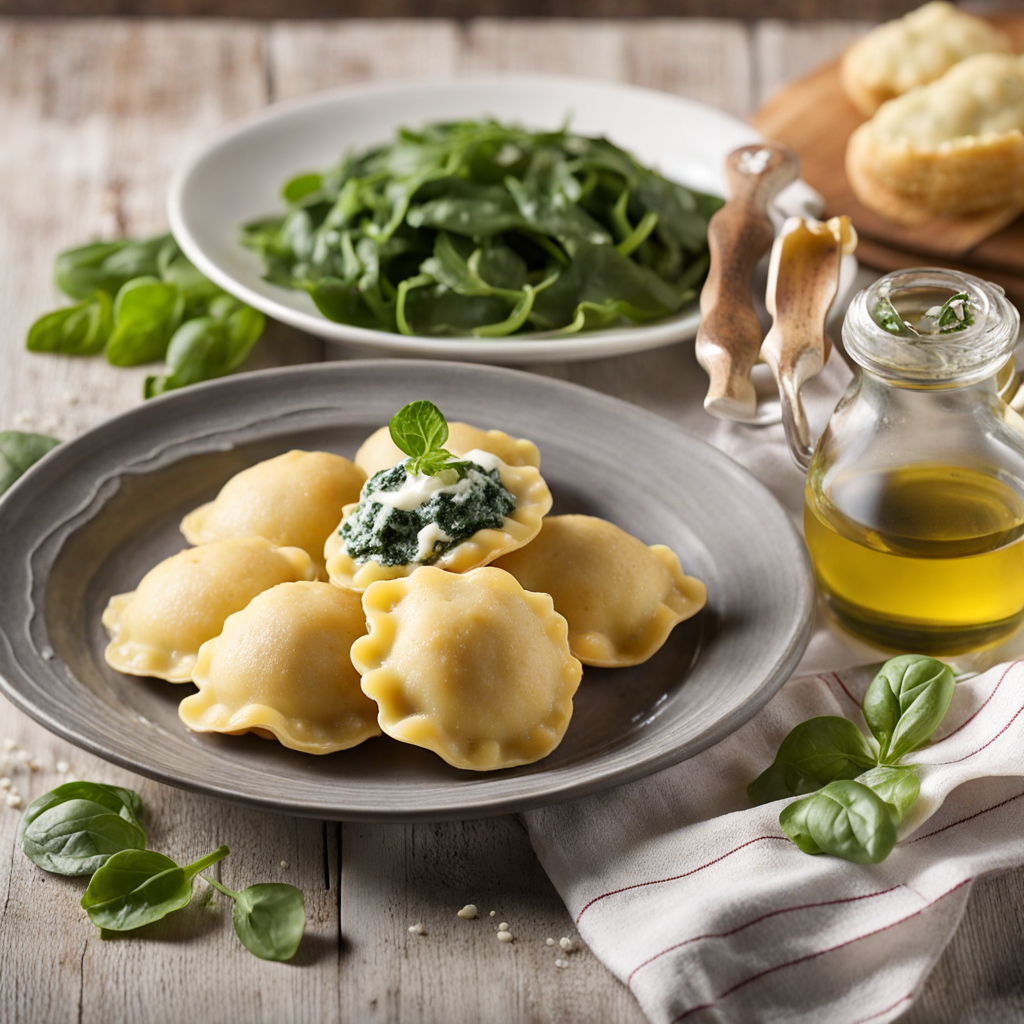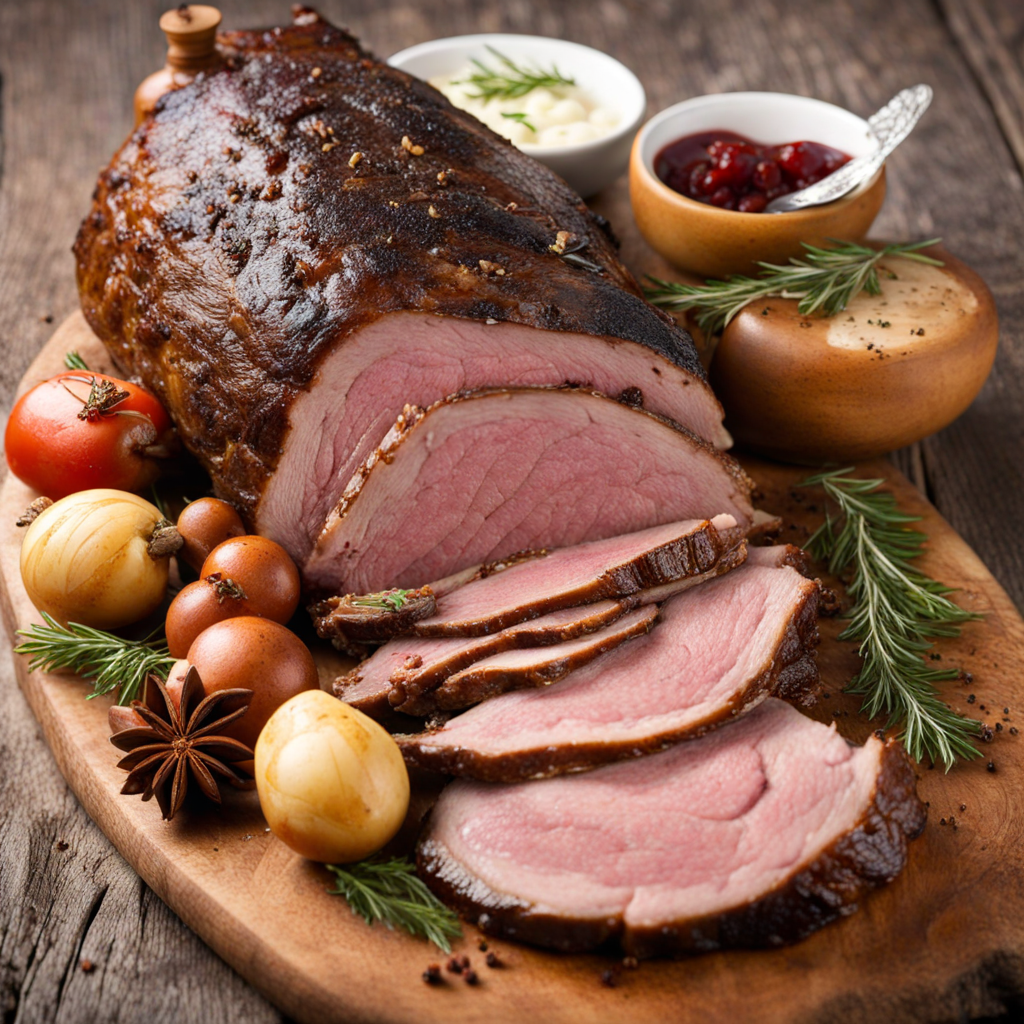Leberknödelsuppe
Leberknödelsuppe, a traditional Austrian dish, is a comforting and hearty soup that features liver dumplings as its star ingredient. The dish begins with a rich, flavorful broth, often made from beef or chicken stock, which serves as a warm and inviting base. The broth is typically seasoned with aromatic herbs and spices, creating a fragrant backdrop that enhances the overall taste experience. This soup is especially popular during the colder months, providing both nourishment and warmth to those who enjoy it. At the heart of Leberknödelsuppe are the liver dumplings, or "Leberknödel," which are crafted primarily from finely ground liver, usually pork or beef, mixed with stale bread, onions, and various seasonings. The mixture is shaped into dumplings and then gently poached in the simmering broth, allowing them to absorb the rich flavors while maintaining their tender texture. The dumplings offer a unique taste that is savory and slightly gamey, balanced by the softness of the bread and the aromatic components. Served steaming hot, Leberknödelsuppe is often garnished with freshly chopped parsley, adding a pop of color and a hint of freshness. The combination of the hearty dumplings with the savory broth provides a satisfying and indulgent experience for the palate. For those eager to explore traditional Austrian cuisine, Leberknödelsuppe is a delightful dish that showcases the region's flavors and culinary heritage, making it a must-try for anyone looking to discover new tastes.
How It Became This Dish
Leberknödelsuppe: A Culinary Treasure of Austria Leberknödelsuppe, or liver dumpling soup, is a dish that encapsulates the rich culinary heritage of Austria. This hearty and comforting soup is not just a delicious meal; it is a reflection of the country’s history, culture, and regional traditions. To truly appreciate Leberknödelsuppe, we must delve into its origins, cultural significance, and evolution over time. Origins of Leberknödel The roots of Leberknödel can be traced back to the medieval period in Europe, where the use of offal was common due to the need for resourcefulness in cooking. As a food culture that often sought to minimize waste, the utilization of all parts of an animal was essential, especially among the peasant classes. The practice of making dumplings, filled with various ingredients, likely arose from the necessity to feed large families with minimal resources. In Austria, liver dumplings became a staple in the cuisine, particularly in the regions of Upper Austria and Styria, where the dish gained immense popularity. The term “Leberknödel” itself can be broken down into “Leber” (liver) and “Knödel” (dumpling), highlighting the dish's primary ingredient. Traditionally made from beef or pork liver, the dumplings are seasoned with a variety of herbs and spices, and they are often served in a rich broth. Cultural Significance Leberknödelsuppe is more than just a dish; it carries significant cultural weight in Austrian society. In many Austrian households, it is considered a comfort food, often prepared during special occasions or family gatherings. The soup is frequently associated with the festive season, particularly at Christmas, where it may be served alongside other traditional dishes. The dish embodies the principles of Austrian cuisine—simplicity, hearty flavors, and a focus on local ingredients. It reflects the agricultural practices of the region, where farms often raise livestock for meat and dairy, and utilize their by-products to create wholesome meals. In this way, Leberknödelsuppe showcases the resourcefulness of Austrian cooks who have maintained traditions while adapting to changing tastes and technologies. Moreover, Leberknödelsuppe is a dish that transcends social classes. Whether served in a humble household or a fine restaurant, it remains a beloved component of Austrian culinary identity. Its presence on menus across Austria underscores the importance of regional foods in the context of national identity. Development Over Time As Austria underwent various political and social changes throughout history, so too did its culinary landscape. The influence of the Austro-Hungarian Empire, which spanned various cultures, brought new flavors and cooking techniques into the Austrian kitchen. The culinary traditions of neighboring countries, such as Hungary, the Czech Republic, and Italy, subtly enriched Austrian dishes, including Leberknödelsuppe. In the 19th century, with the rise of the middle class and the advent of formal dining, the presentation and preparation of traditional dishes began to evolve. Leberknödel recipes diversified, with cooks experimenting with different types of liver and spices. The soup itself became an essential part of formal dining, often served as a starter in multi-course meals. The post-World War II period saw a resurgence in traditional cooking as people sought comfort in familiar flavors during times of upheaval and change. Leberknödelsuppe once again gained popularity in households, as well as in restaurants, becoming a symbol of home-cooked comfort amidst a rapidly changing society. In contemporary Austria, Leberknödelsuppe enjoys renewed popularity, often found in traditional Gasthäuser (inns) and modern eateries alike. Chefs today honor the classic recipes while also experimenting with new interpretations, incorporating organic and locally sourced ingredients. Vegetarian versions have emerged, showcasing how the dish can adapt to modern dietary preferences without losing its essence. Recipe and Preparation While recipes for Leberknödelsuppe can vary by region and family tradition, the core ingredients remain consistent. The dough typically consists of finely minced liver, bread soaked in milk, onions, eggs, and a variety of spices like nutmeg, salt, and pepper. Fresh herbs such as parsley or chives may also be added for flavor. The preparation begins with the making of the dumplings, which are shaped into small balls and then poached in broth until cooked through. The soup is usually made from beef or chicken stock, infused with a medley of vegetables like carrots, celery, and leeks to enhance its depth of flavor. Once the dumplings are ready, they are served in bowls of steaming broth, often garnished with fresh herbs for a touch of color and aroma. Modern Interpretations In recent years, Leberknödelsuppe has found its way into the culinary spotlight, particularly as chefs embrace local and sustainable cooking practices. Many modern restaurants feature the dish on their menus, often reinterpreting it with creative twists. Some chefs incorporate elements from international cuisines, such as Asian spices or Mediterranean herbs, to give the dish a contemporary flair. The resurgence of interest in traditional cooking methods has also led to a renewed appreciation for Leberknödelsuppe. Cooking classes and food festivals highlight this comforting soup, teaching new generations how to make it from scratch. Home cooks are encouraged to experiment with ingredients, creating personalized versions that reflect their tastes and dietary needs. Conclusion Leberknödelsuppe is more than a simple soup; it is a culinary artifact steeped in history, culture, and tradition. As it has evolved over centuries, the dish has remained a staple in Austrian households, symbolizing the nation’s resourcefulness and connection to its agricultural roots. Today, it stands as a testament to the enduring legacy of Austrian cuisine, bridging the past with the present and inviting future generations to savor its rich flavors and comforting warmth. Whether enjoyed in a bustling restaurant or a cozy family kitchen, Leberknödelsuppe continues to be a cherished part of Austria's culinary tapestry, embodying the spirit of a nation that values tradition yet embraces innovation.
You may like
Discover local flavors from Austria


